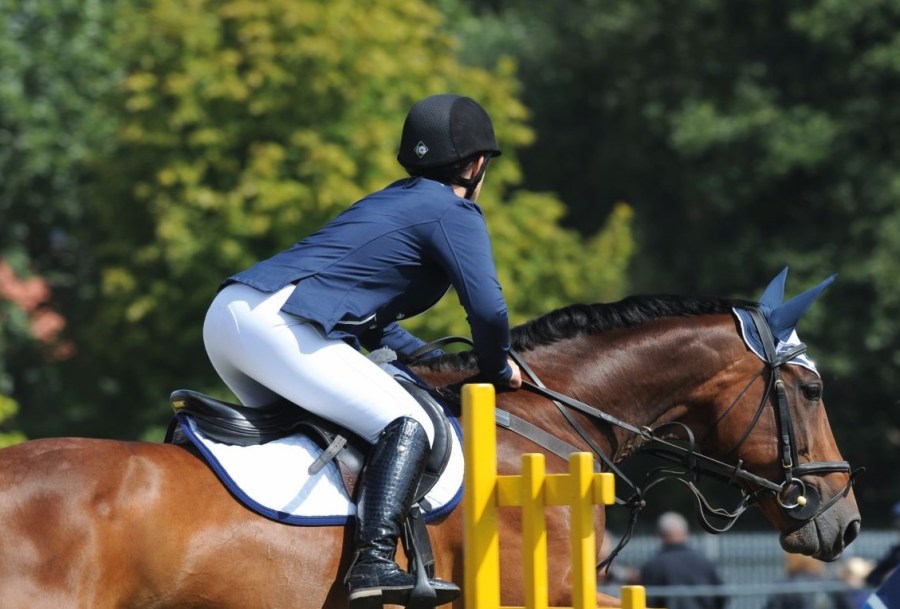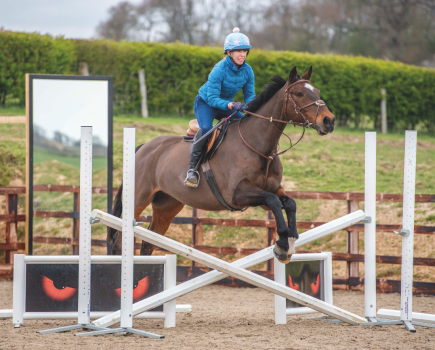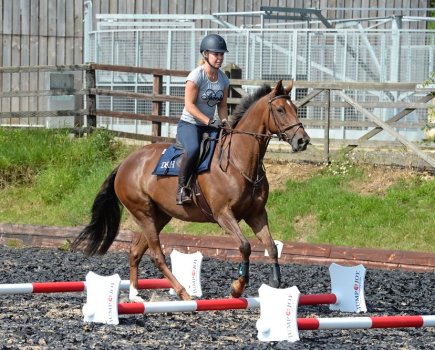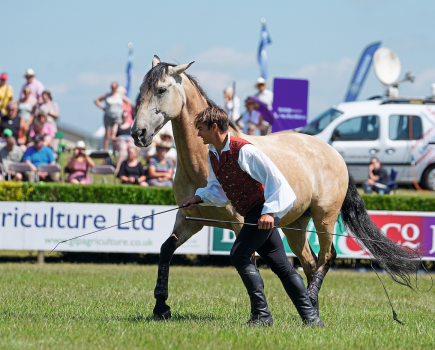A horse rider’s jumping position can mean the difference between going clear or not, as well as instilling confidence in both you and your horse.
As a rider, it doesn’t matter what level you are, the ability to maintain a correct position in the saddle is essential. Your position for flatwork and jumping is something that you are constantly striving to improve, and it can be all too easy to slip into bad habits. These habits can affect your horse’s balance and make it difficult for them to perform the movements, or tasks such as jumping, easily.
Remember too that everyone is a little different in their conformation, and how each horse jumps is also different. This is why you need to be adaptable and open-minded. The theory is a good starting point, but riding in a secure yet relaxed position where you can follow the movement of your horse is what’s needed for flatwork and jumping.
I asked leading trainer John Thelwall about some of the most common horse riding jumping position errors that he sees riders making in the ring. Do you do any of the following?
Horse rider jumping position: Overfolding
The problem
“Throwing or snapping your upper body forwards is a common problem and I will always ask riders I am training why they are doing it,” says John. “Many of these problems come back to the same issue, namely that the rider struggles to maintain a secure but relaxed position so they can follow the movement of the horse over the jump. Remember one of the purposes of the jumping position is to help your horse stay in balance.
”Also, the key to rebalancing your horse after each fence is your ability to land in balance, independent of their movement. To achieve this requires minimum upper body movement over the fence; too much forward movement creates the need for too much backward movement on landing, resulting in further movement forward during the first stride after landing, which is the all-important start of the approach to the next fence.”
The solution
According to John, it will take time and patience to break the habit of overfolding and it is a case of practising not moving your upper body so much over a fence. Think about creating a good quality canter to each jump and avoid the temptation to do too much with your upper body. Wait for your horse to take off and allow your hips to close and follow the movement.
“As you land, let your weight come down into your heel rather than into your knees,” advises John. “This will help you to stay in control and, importantly, in balance, meaning that you can ride confidently to the next jump.”
Position problem: Flapping your elbows
The problem
This is seen on the approach to the fence as a rider rows their arms back and forth urging the horse forwards to the jump. The main reason riders feel that they need to do this is because they’ve not done enough work in the first place to help their horse and the canter is poor.
“All the work — creating a good quality canter — should be done as you turn to each jump, so that you can sit quietly on the approach,” explains John. “You’ll only feel like you need to start flapping your elbows and legs on the approach if your horse is not in front of your leg.
“Having said this, I would prefer to see elbows out a little rather than tucked into your sides as this makes you tight in your shoulders, which in turn makes it much harder for you to follow your horse as they jump. Your arms will remain much softer if they are out a bit — but not flapping.”
The solution
The problem of flapping elbows comes back to your flatwork training. Your horse must respond to your aids and be in front of your leg. If this isn’t happening on the flat then it won’t happen when you start jumping.
“It’s time to go back to basics and get your horse listening and reactive to your aids,” says John. “Ride lots of transitions between the paces, and within each pace too. Make sure that when you put your leg on, your horse goes.”
Position problem: Pushing hands too forward
The problem
This problem is often seen in riders who also overfold. There is no need to exaggerate the movement of your hand over a jump; that much movement will upset your horse’s balance and your own. Also, ask yourself — why are you throwing the contact away towards the horses ears? You don’t do that when you’re riding on the flat.
The solution
“I find that most riders that can’t follow their horse with the rein jumping can’t follow their horse on the flat either,” says John. “The aim is to have a straight line from your elbow down the rein to the bit, but it has to be soft and relaxed so your hand is ready to travel forward at any given moment. If your horse needs a little bit more rein than your balance will cope with, just open your fingers to allow the rein to slip through your fingers a little.”
How you hold your reins will have an impact on your ability to move with your horse. It can be hard to slip the reins if you hold them with your thumb and forefinger. If the rein just passes over the third finger but is held by the thumb and forefinger, you end up dropping the reins rather than slipping them. You need to hold the reins with your third finger — that’s the point of contact. From here it’s much easier to slip the reins and have a more adaptable feel down the reins.
Horse rider jumping position: Folding to one side
The problem
This is another relatively common sight, and is when the rider bends the upper body over one shoulder of the horse. Adopting this position makes the horse carry your weight unevenly, with more on one side than the other, making it more difficult for him to jump cleanly.
This issue occurs when the rider has too much weight in one stirrup, and can be corrected only by making sure they have equal weight in both stirrups. If you even your feet up, you’ll even your body up too.
The solution
To help correct this issue, try shortening your stirrups a few holes and riding around your arena or field in canter, sitting as you would if you’re doing flatwork. As you ride round lean to one side and then lean to the other — feel what happens to you and what effect it has on your horse.
Now canter round and concentrate on maintaining an equal feel into both stirrups. If you are struggling, try going into a more forward position in the saddle. By not jumping and simply focusing on your position, you give yourself time to feel what is happening and where your weight is.
Position problem: Letting your reins get too long
The problem
Rein length is a difficult one to talk about in general terms as every horse and rider will require a slightly different rein length. Take up a length of rein that’s comfortable for both of you. You need to discover where that is, and it will be similar for riding on the flat and for jumping.
“My rule of thumb is that whatever contact you want in the hand as your horse takes off, you must achieve that as you turn to the jump,” says John. “If you like your horse to be in a light contact at take-off, they must be in that light contact as you come round the turn to the jump. If you feel as if you need to support them a bit then you have to give them that support around the turn.”
The solution
All horses are different. Some like virtually no contact and some prefer to have a little support. You’ll only learn what they like by practising and keeping an open mind — it’s not a one size fits all.
Meet the expert: Jockey turned showjumper turned eventer John Thelwall trains and rides horses of all levels and enjoys producing youngsters. He has natural empathy with horses and this translates to his students, filling them with confidence.








